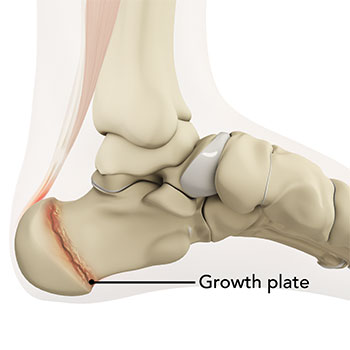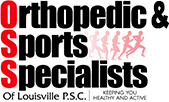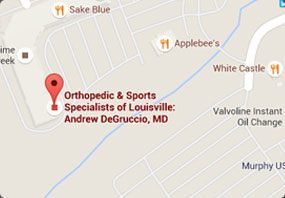Sever's Disease: Most common foot pain problem in adolescents

Heel pain is a common problem for young athletes. It is more common in boys, but becoming common in young girls as well, as similar sports are being played equally as often. It frequently develops in pre-adolescence, about 9-10 years old. The pain is usually sports and activity specific. Typically it occurs in sports with heel cleats. Most of the time there is no pain with normal walking in comfortable tennis shoes.
Since heel pain is also common in adults, it is tempting to assume the problem is the same. Typically in adults the problem is "plantar fasciitis". Unfortunately, this assumption is wrong. The difference in kids and adults is the fact that the growth plates in the feet are still open. This, in fact, is the origin of this pre-adolescent problem. The growth plate at the back and bottom of the heel bone is called a secondary growth center. The Achilles tendon and plantar fascia attach to this secondary growth center. The problem that develops is chronic irritation of this secondary growth center. The problem is probably multi-factorial, meaning that no one problem causes it. It is likely that a combination of a tight heel cord (Achilles tendon), high arch, and direct pressure repetitively over the area directed locally by the cleats, result in the culmination of a stress reaction to the growth center.
On examination, it is unlikely to discover any significant clinical findings, including localized pain. This is what differentiates this problem from the adult "plantar fasciitis". On x-ray, the heel bone secondary growth center can show fragmentation and increased density, but these findings can also be found in kids with no heel pain. The diagnosis is truly a clinical diagnosis based on history and patterns of pain.
Treatment is basic. If treatments recommended seem complicated or overly involved, then something is wrong. Symptomatic relief is what is sought. To achieve this, common sense is employed. Use pain as a guide for activities. Orthopedic research indicates no harm will come from trying to continue sports even despite the pain. Good supportive shoes at all times should be worn. All shoes should provide arch support and heel padding. No barefootedness. Adding comfortable arch supports to shoes or cleats can be of assistance. Over-the-counter anti-inflammatories, such as ibuprofen, usually do help. Ice after activities can help. The most important element of treatment is stretching of the foot and heel cord. This should be done multiple times per day. Changing from traditional cleats to an all-turf type of shoe can help.
Most importantly, all kids outgrow this problem. When the secondary growth center fuses to the rest of the heel, the problem resolves. This usually occurs around 12-13 years of age. Until that time, if the pain becomes overwhelming, then sports should be reduced, and an evaluation by a Sports medicine specialist should be sought. A referral to formal physical therapy can help with pain control and stretching.







